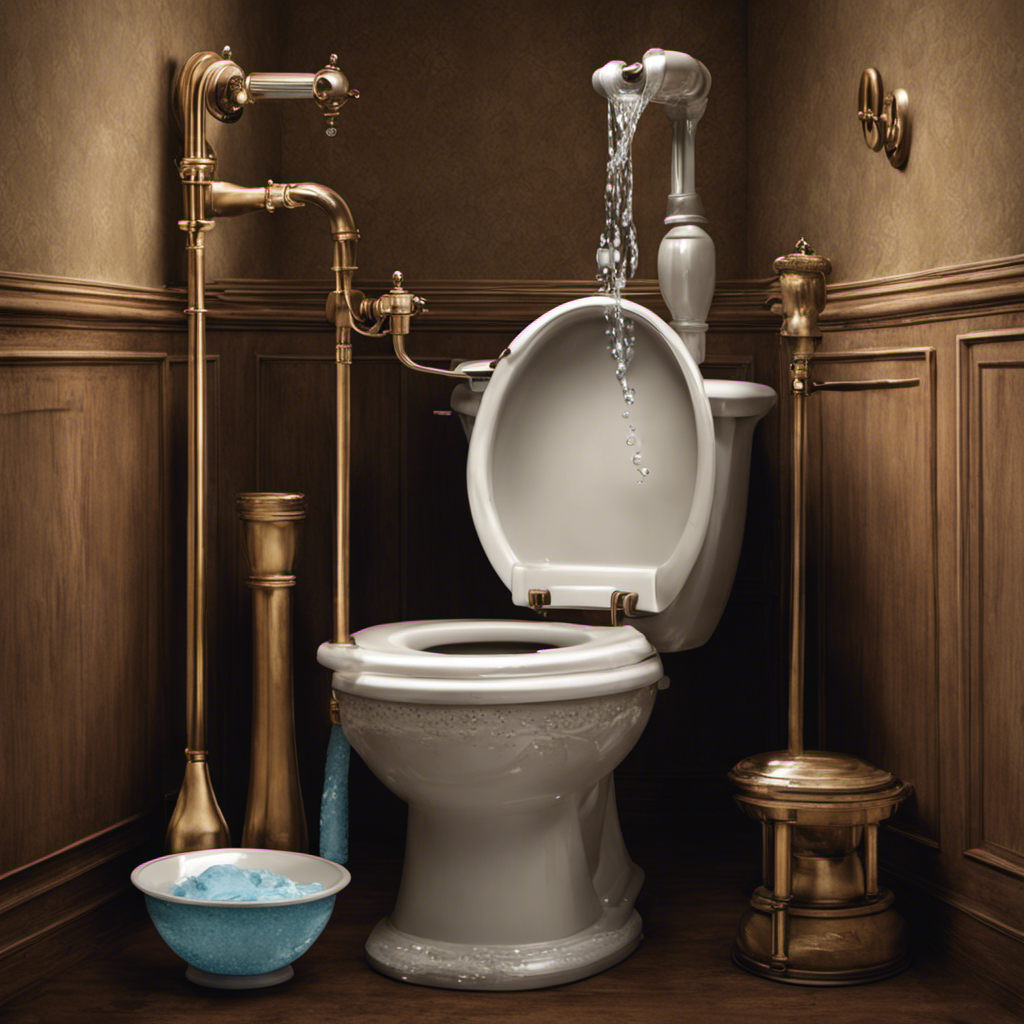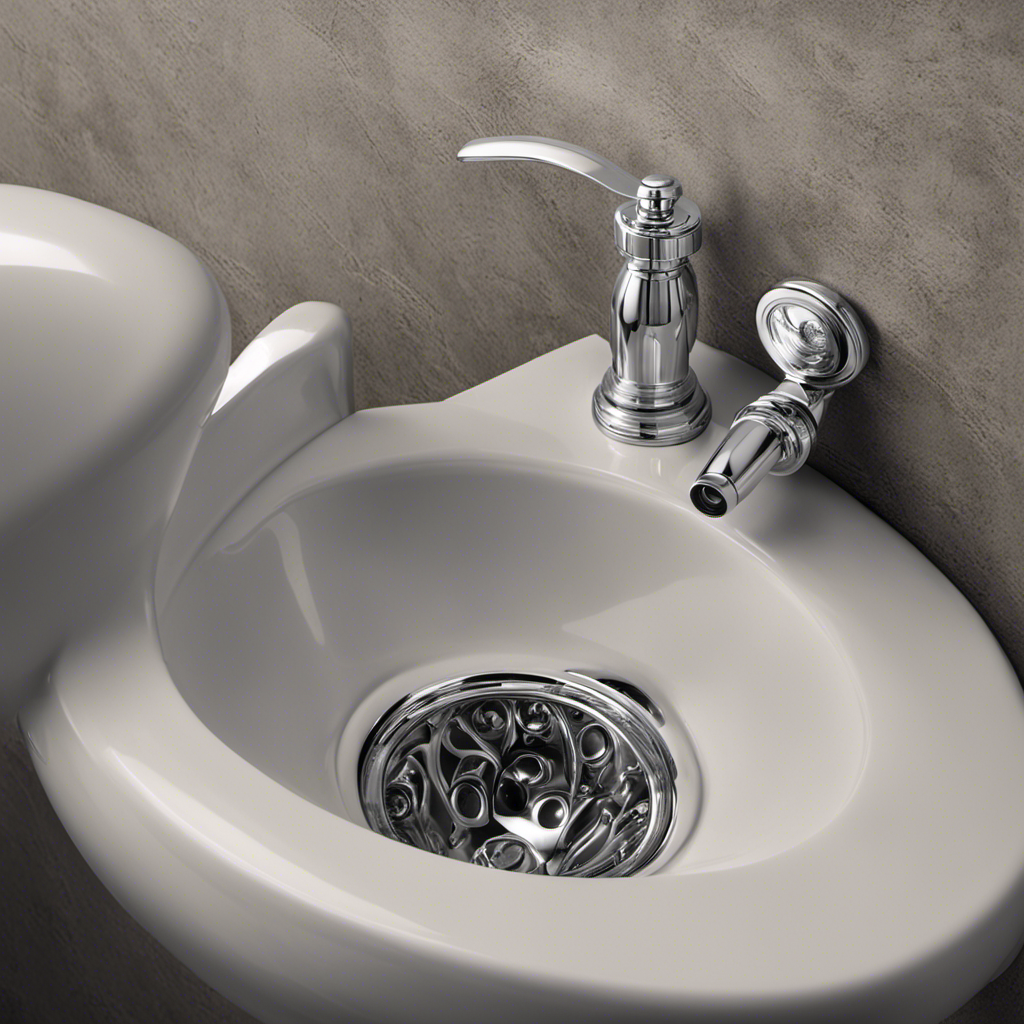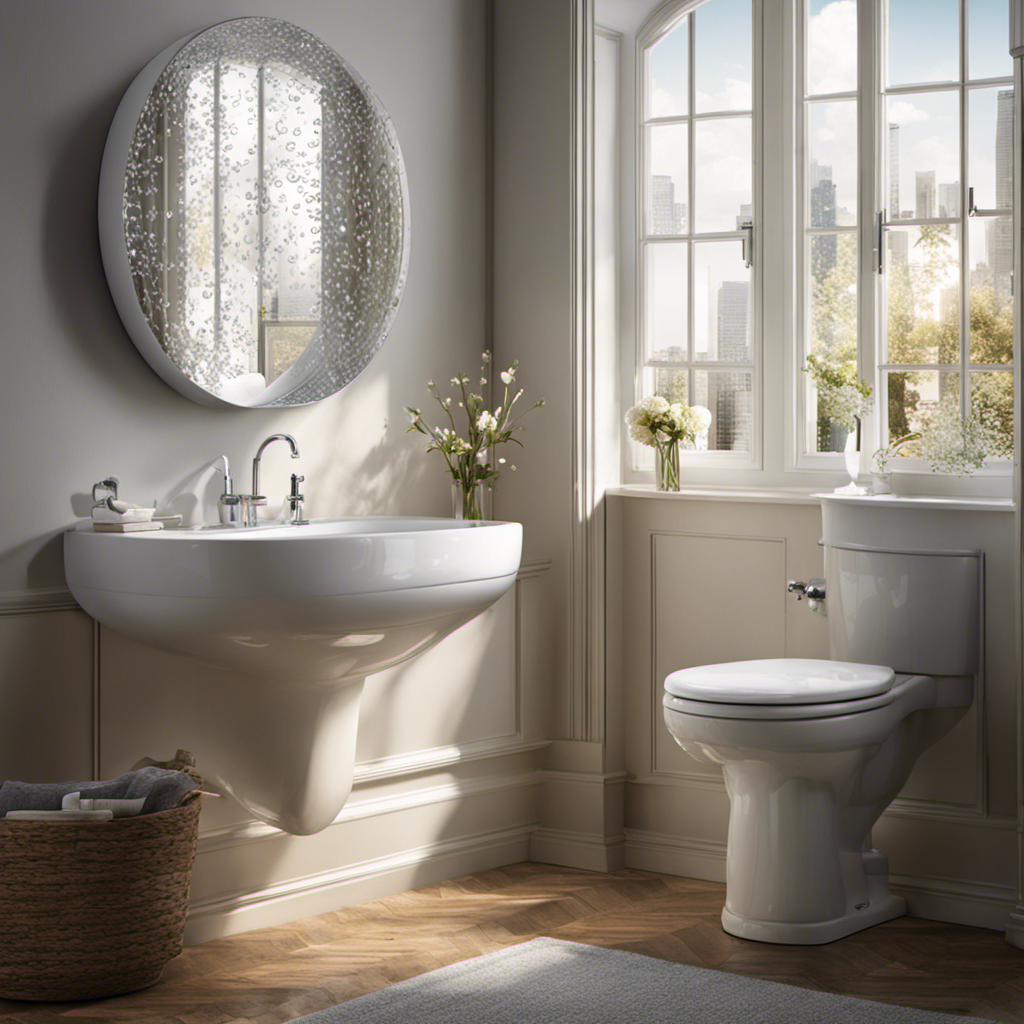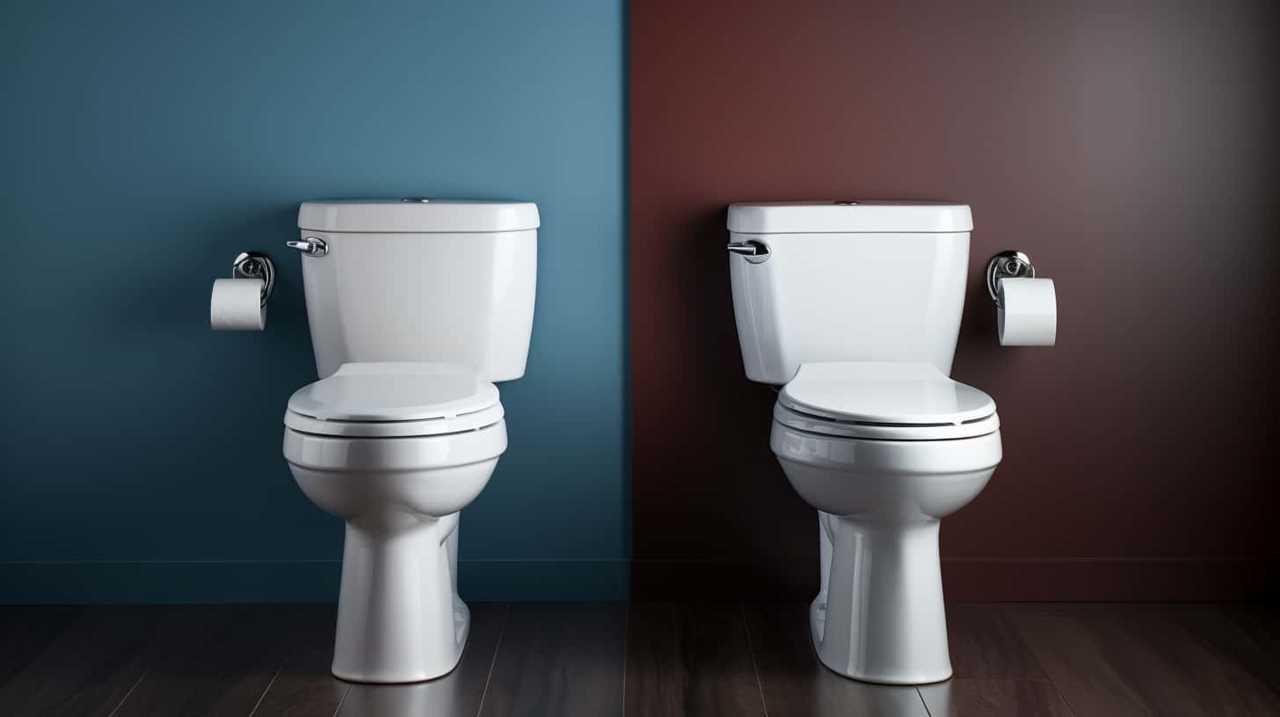Hey there! Ever found yourself in a sticky situation with a toilet clogged to the brim? Don’t panic, because I’ve got your back.
In this guide, I’ll walk you through the step-by-step process of unclogging a toilet full of water. From gathering the necessary tools to assessing the severity of the clog, we’ll cover it all.
So, grab your plunger and get ready to tackle this pesky problem like a pro. Let’s dive in!
Key Takeaways
- Have the necessary tools, such as a flange plunger and toilet auger, on hand before starting.
- Assess the severity of the clog by checking the water level in the bowl.
- Try basic unclogging techniques like using a toilet snake or a chemical solution.
- If all else fails, consider calling a professional plumber for severe clogs.
Gather the Necessary Tools
Before you begin, make sure you have all the necessary tools to unclog the toilet. To successfully tackle a clogged toilet, there are a few key items you’ll need.
First, you’ll want to have a plunger on hand, preferably a flange plunger specifically designed for toilets. This type of plunger creates a better seal around the drain opening, increasing the effectiveness of the unclogging process.
Additionally, having a toilet auger or a snake can be useful for more stubborn clogs that the plunger can’t handle. These tools allow you to reach deeper into the drain and break up the blockage.
Now that you have the essential tools, let’s delve into the common causes of toilet clogs and the methods to unclog them.
Assess the Severity of the Clog
To determine the severity of the clog, you’ll need to check the water level in the bowl. This will help you understand the extent of the blockage and choose the appropriate method to unclog the toilet.
Here are three common types of toilet clogs and how to prevent them:
-
Partial Clog: This occurs when the water level in the bowl is higher than usual but not overflowing. It is often caused by excessive toilet paper or small objects. To prevent this type of clog, avoid flushing large amounts of toilet paper at once and keep small objects away from the toilet.
-
Full Clog: When the water level reaches the brim of the bowl and doesn’t drain, you have a full clog. This is usually caused by a combination of waste, toilet paper, and foreign objects. To prevent this, only flush waste and a reasonable amount of toilet paper.
-
Overflowing Clog: This is the most severe type of clog, where the water floods over the rim of the toilet bowl. It can be caused by a complete blockage in the drain pipe. To prevent this, avoid flushing anything other than waste and toilet paper.
Understanding the type of clog will help you determine the appropriate unclogging technique in the next section.
Try Basic Unclogging Techniques
Now let’s see if you can try some basic techniques to clear the clog.
The first method is using a toilet snake. This tool is designed to break up and remove stubborn blockages. Start by inserting the snake into the drain opening and rotating the handle clockwise. As you push forward, the snake will work its way through the clog, allowing water to flow freely again.
Another option is to use a chemical solution. Choose a product specifically made for unclogging toilets, as other drain cleaners may be too harsh and damage the porcelain. Follow the instructions on the bottle, usually pouring the solution into the toilet bowl and letting it sit for a specific amount of time. Then, flush the toilet to see if the clog has cleared.
Use a Toilet Plunger
If you’re still having trouble, try using the toilet plunger to dislodge the blockage. The toilet plunger is a handy tool that can effectively clear clogs in your toilet.
Here are three toilet plunger techniques to help you unclog your toilet:
-
Position the plunger: Make sure the plunger covers the entire drain opening in the toilet bowl. It should create a tight seal.
-
Apply firm pressure: Push down on the plunger with force, then pull up quickly. Repeat this motion several times, maintaining a strong seal.
-
Use water to aid suction: If the toilet is full of water, add more water to the bowl. The additional water will help create more suction when plunging.
Using these toilet plunger techniques can often solve the clogging issue. However, if all else fails, it may be time to call a professional plumber.
Call a Professional Plumber if All Else Fails
When all else fails, it’s time to call a professional plumber. While there are many DIY methods to unclog a toilet, severe clogs may require the expertise of a professional. Knowing when to hire a professional can save you time, money, and frustration.
Common causes of severe clogs include objects being flushed down the toilet that shouldn’t be, such as baby wipes, feminine hygiene products, or excessive amounts of toilet paper. These items can become lodged in the pipes, causing a blockage that is difficult to remove.
Here is a table that highlights the common causes of severe clogs:
| Common Causes of Severe Clogs |
|---|
| Flushing non-flushable items |
| Excessive toilet paper usage |
| Build-up of mineral deposits |
A professional plumber has the necessary tools and experience to tackle even the toughest clogs. They can use specialized equipment like drain snakes or hydro jetting to effectively remove the blockage and restore proper flow to your toilet.
Frequently Asked Questions
Can I Use a Regular Household Plunger to Unclog a Toilet, or Do I Need a Special Toilet Plunger?
Using a regular household plunger can be effective in unclogging a toilet, but a special toilet plunger is more effective. Its design creates a better seal, providing more suction power to clear the clog.
Is It Safe to Use Chemical Drain Cleaners to Unclog a Toilet?
Using chemical drain cleaners to unclog toilets has pros and cons. They can be effective in breaking down clogs, but they also carry potential dangers such as chemical burns and damage to plumbing systems.
How Long Should I Wait After Using a Plunger Before Trying Other Unclogging Techniques?
Waiting for the right time to try different unclogging techniques is crucial. It’s like waiting for a storm to pass before venturing outside. Give the plunger a few tries, then wait 15 minutes before attempting other methods.
What Should I Do if the Water Level in the Toilet Bowl Continues to Rise After Attempting to Unclog It?
If the water level in the toilet bowl continues to rise after attempting to unclog it, I would immediately turn off the water supply valve behind the toilet to prevent a potential overflow.
Are There Any Alternative Methods or Tools I Can Use to Unclog a Toilet if a Plunger Doesn’t Work?
When a plunger fails, there are alternative methods to unclog a toilet. One option is using a toilet snake, a flexible tool that can break up and remove clogs. Another is the hot water method, which involves pouring hot water into the toilet to dissolve the blockage.
Conclusion
Well, it seems you’ve found yourself in quite the predicament with a toilet full of water. Fear not, for I have bestowed upon you the wisdom of unclogging this watery abyss.
With the right tools and a little determination, you can conquer this challenge. From basic techniques to the mighty plunger, you have the power to vanquish the clog.
But if all else fails, do not despair. Summon the aid of a professional plumber, for they possess the arcane knowledge to banish any clog from your porcelain throne.










